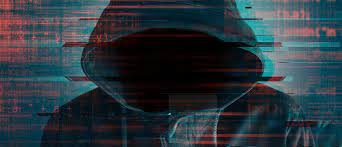
Recently I read an article about the DarkNet . Before this, my only exposure to the DarkNet was some news segments alarming me to the dangers of the network. The segments are nearly identical and use the same, ominous graphic (like the one above) of someone appearing to do something nefarious. These news clips cast the DarkNet as a virtual lair of child pornographers, identity thieves, and terrorist extremists. While those elements do exist, the DarkNet also offers more, some of which is positive. While accessing the DarkNet is not illegal per se, one risks encountering harmful material, or at minimum, being dropped by his Internet provider. The following information from that article provides some basic information about the DarkNet designed to educate those working at the intersection of the digital world and sexual offending.
1. What is the DarkNet? Rather than start with the technical aspects and confuse readers with complex jargon, it is likely better to think about the DarkNet on a broader, conceptual level first. From this perspective, it becomes clear the DarkNet is about anonymity. DarkNet architects, as well as current users, value and prioritize anonymity. This anonymity may involve hiding disreputable operations or providing internal corporate documents as part of a whistleblower action. Users find anonymity by operating far below the Internet’s Surface and Deep Web levels.
All Internet users are already familiar with the Surface Web, the part of the Internet composed of widely accessible websites and search engines like Google. For reference, the Surface Web only makes up a fraction of the entire Internet. In addition to the Surface Web, there are sites and Internet features that are harder to find and can not be accessed with search engines. Often, access to Deep Web features require the use of a password or online credentials. The Deep Web includes everything from one’s personal Amazon account to his or her company’s intranet. Many readers who have worked in a modern hospital have used Deep Web services when accessing a patient's electronic medical file. In comparison to the Surface and Deep Webs, specialized software is needed to access the DarkNet.
2. How does one find the DarkNet? The information and specialized software, like Tor, needed to access the DarkNet can be found on the Surface web. Tor, short for The Onion Router, refers to both the software needed to browse the Internet anonymously and the network of computers that make up the system.
To put it simply, imagine you were tasked with spreading a secret message. You were given a location and person to pass the message to. However, you don't ever learn if that person is the intended recipient of the secret message or another messenger in a larger chain. In this situation, you only know the person that provided you the message and the one you passed it to. This is essentially how Tor works to hide one's Internet browsing. Once on the DarkNet, one can turn to directories or search engines, organized according to content.
3. What does someone do on the DarkNet? As stated above, the DarkNet is used to maximize privacy. While the DarkNet is largely known for more nefarious reasons, most individuals accessing the platform are not engaged in illicit activity. Many are concerned with secret government surveillance and do not want to have their digital history cataloged. Additionally, the DarkNet has been used to fight against tyranny and injustice. For instance, those living under authoritarian regimes use it as a means of safe communication. Even the New York Times is present on the DarkNet, providing a secure submission portal to whistleblowers trying to get sensitive information to the public.

Add new comment